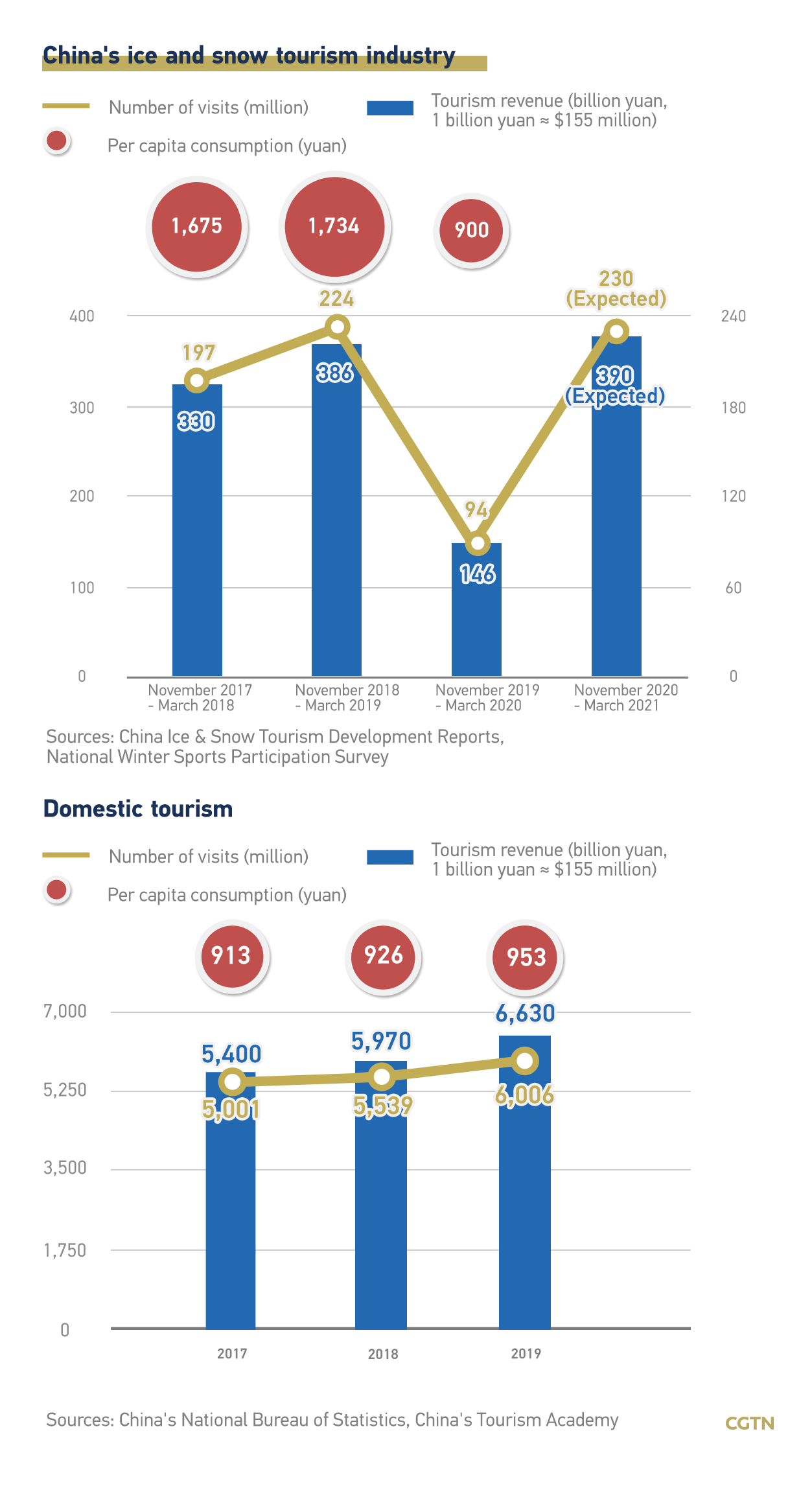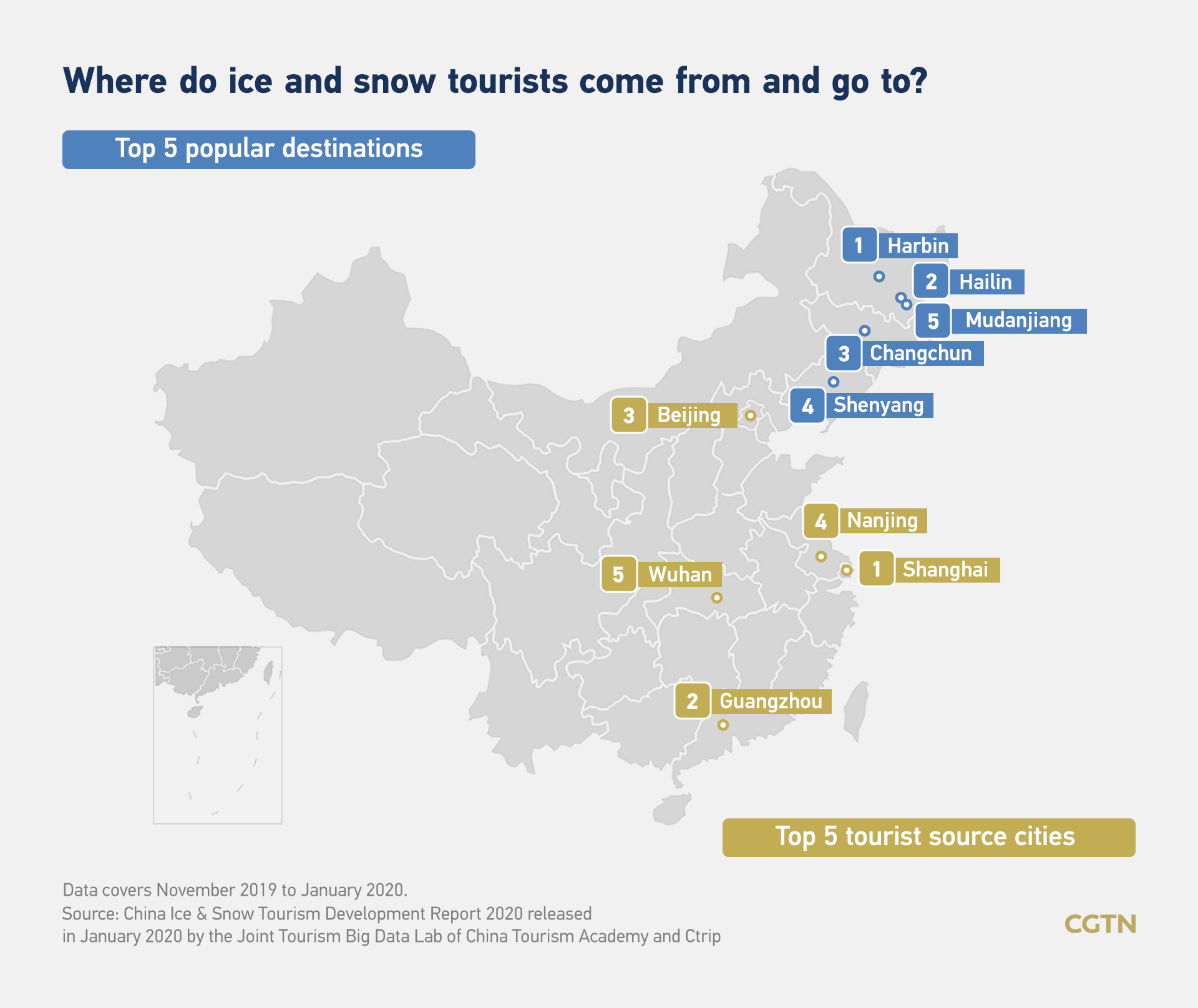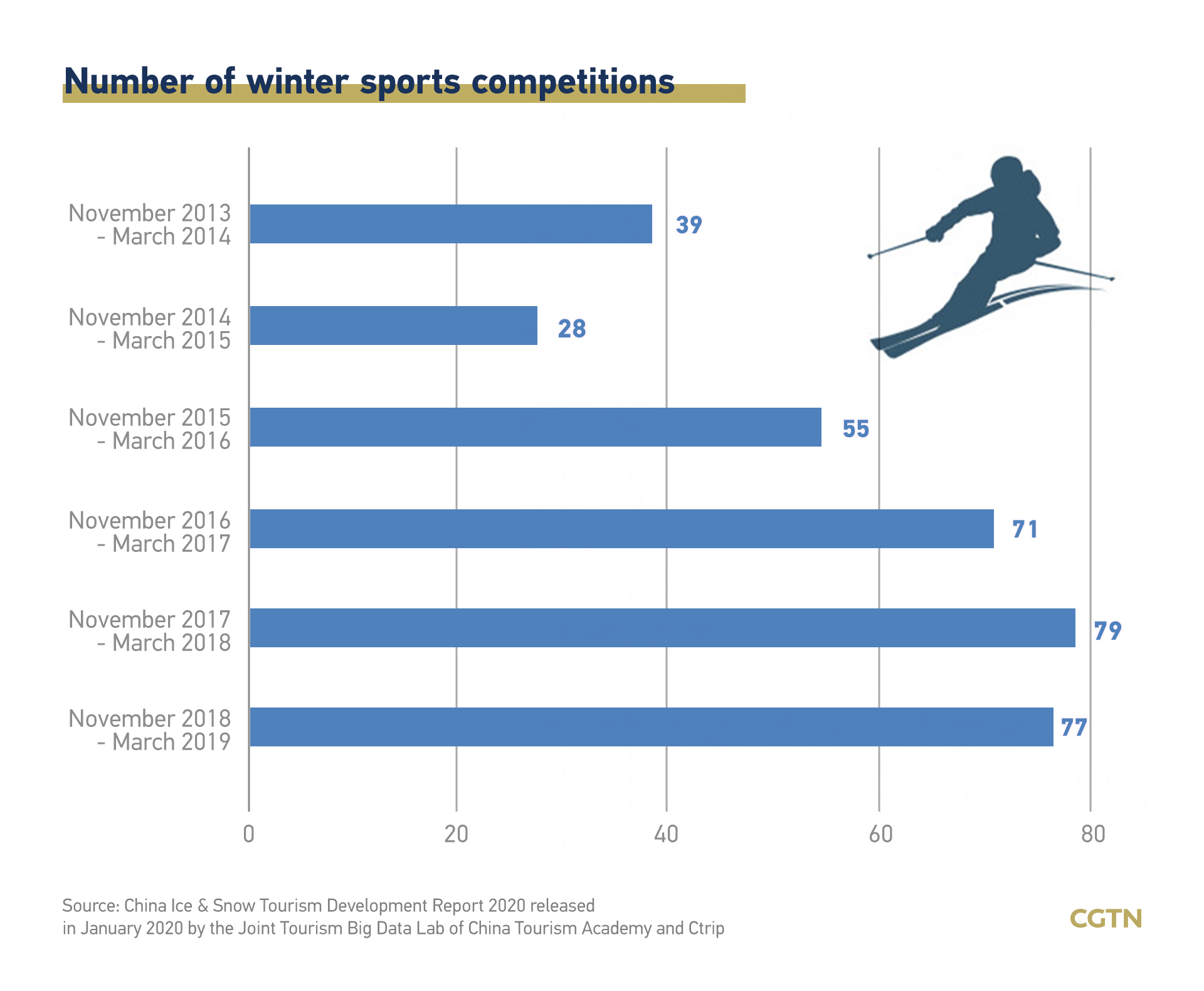Since Beijing won the bid in 2015 to host the 2022 Winter Olympics, China has pushed for greater participation in winter sports and made the development of the ice and snow industry a priority.
Skiing and other winter sports have since become very fashionable pastimes for many Chinese people. Ice and snow tourism has enjoyed rapid growth momentum, and the number of visits and revenue of the sector continue to surge: in fact, their growth rates exceeded those of domestic tourism in recent years.
Per capita consumption during the 2017-2018 ice and snow tourism season, which lasted from November 2017 to March 2018, and the 2018-2019 season were 1.8 times that of per capita consumption of domestic tourism in 2017 and 2018 overall.

About 150 million people across the country participated in ice and snow sports in the winter season of 2019-2020, achieving half of the goal of "300 million people engaging in winter sports" proposed in Beijing's bid report for the Winter Olympics, according to the National Winter Sports Participation Survey 2020 by Renmin University of China issued in December 2020. That's over one in every five Chinese people.
By 2025, the number of ice and snow tourists in China is forecast to exceed 500 million and the sector's revenue is expected to exceed 1.1 trillion yuan ($170 billion), according to a China Ice & Snow Tourism Development Report 2020 released by the Joint Tourism Big Data Lab of China Tourism Academy and Ctrip.

So where do tourists like to go to for ice and snow activities in China?
According to booking data from Ctrip, the country's largest online travel agency, from November 2019 to January 2020 the most popular traditional ice and snow tourist destinations were Harbin, Hailin, Changchun, Shenyang and Mudanjiang. The tourism routes and products in these northern cities, after years of work, have now formed a relatively mature winter tourism system, and become top choices for people to travel for ice and snow.
Ice and snow tourism is particularly attractive to tourists from south China, the data suggests. Shanghai, Guangzhou and Beijing were the top three source cities of ice and snow tourists.
The booking data also shows tourists aged 20 to 40 account for more than half of all ski participants, making them the main force in the ice and snow tourism industry.

The 2020 Survey indicates that "entertainment" remains the main purpose for people to participate in ice and snow sports, followed by "health" and "stress relief."
From 2018 to 2020, the proportion of people "participating ice and snow sports because it's trending" has dropped from 3.1 percent to 2.6 percent, and participating "because of social connection" has dropped from 14.3 percent to 9.8 percent, indicating that engagement in ice and snow sports is moving from curiosity hunting to a more regular hobby.
People who engage in winter sport three or more times a year account for 41.2 percent of the total participants. And "lack of facilities nearby" is the primary barrier for participation.
Amid the COVID-19 pandemic, half of those surveyed with winter sports experience canceled their sporting plans in the winter season of 2019-2020.
From 2018 to 2020, the public's attention to the Beijing Winter Olympics has increased. The proportion of people keeping a close eye on news updates about the Games rose from 6.2 percent in 2018 to 10.4 percent in 2020. Some 70 percent had paid attention to the event over the past three years through different outlets.
In addition, China has held more winter sports competitions each year in preparations for the 2022 Winter Olympics.

China has now become the fastest growing ski market in the world and the number of ski resorts and skiing visits, the two core indicators of the industry, continue to increase.
Chongli in north China's Hebei Province, which will stage most of the ski events in the 2022 Beijing Winter Olympics, is the largest high-end ski area in China. There used to be four ski resorts in 2015, and now there are seven with 169 ski tracks totaling 162 kilometers.
During the 2015-2016 winter season, Chongli sold 480,000 snow tickets, and more than 1 million were sold in the 2018-2019 season.
Graphics designer: Feng Yuan, Chen Yuyang
Cover image: Yin Yating

